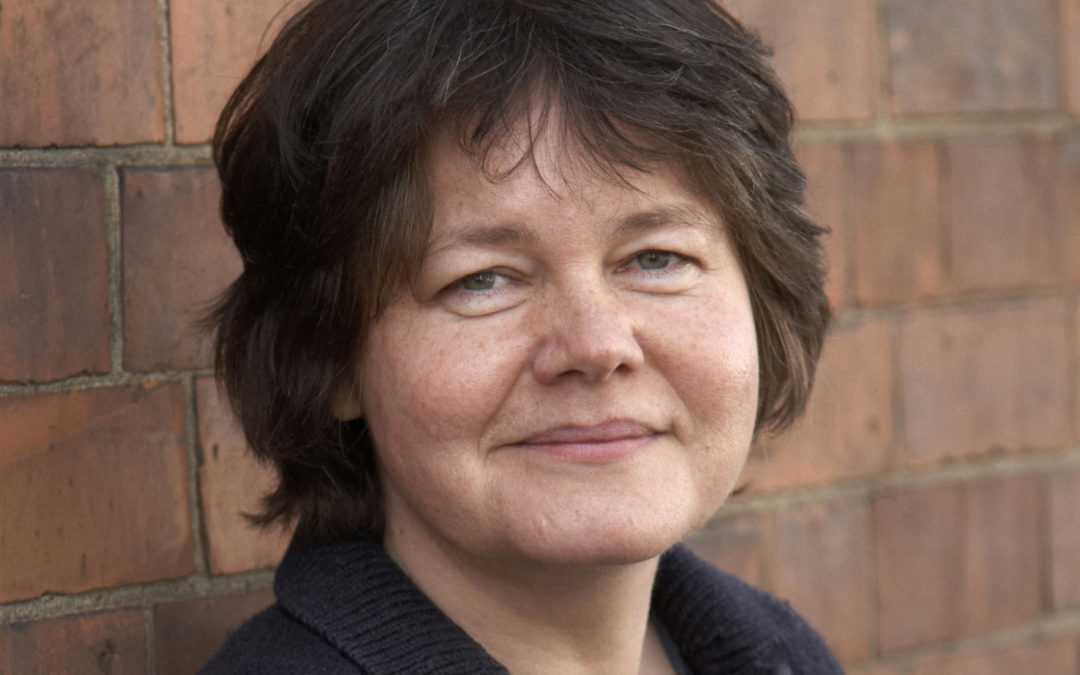We are lucky to have Carolyn Steel (Hungry City, Sitopia) write a foreword for our book ‘The Ark of Taste in the Netherlands’. A brief conversation with her in preparation, about food culture, gastronomic heritage and biodiversity.
Text // Maarten Kuiper
Image // Archive Carolyn Steel
How did you first come to know about Slow Food?
Slow Food was part of my getting into the world of food when I started researching my first book, Hungry City. When I read the Slow Food manifesto I was utterly hooked, I thought it was brilliant. It expressed to me what I felt about food anyway. A really meaningful meal for me when I was younger was always a meal in my grandparents’ hotel. I grew up in an environment where people really cared about where the food came from, and because of that I always knew food mattered.
“When I read the Slow Food manifesto I was utterly hooked, I thought it was brilliant”
What is the value of gastronomic heritage and biodiversity to you personally?
When I started to travel in my teens to countries like France and Italy, I was absolutely blown away by the quality of the food there. I fell in love with those countries through the food. The cheeses, the hams, everything. I remember not knowing what a roquefort cheese was and then literally taking a mouthful and my whole head exploding. It was revelatory. How the food changed from region to region, how fresh it was. How people really cared about it, how they talked about it.
Then I realised how impoverished our own food culture was. In the UK when I was growing up, outside of my family people didn’t talk about food, it was considered impolite to talk about food. We had amazing food in the UK, but we just didn’t appreciate it.
How do you explain that lack of appreciation?
That goes back a long way. First, there was the industrial revolution from 1750 onward, during which people were forcibly removed from the land. So we basically destroyed our peasantry, the people who made our traditional local food. Then, with the French revolution, all the chefs to the French nobles were out of a job and started travelling across the world, and spreading this fancy ‘food for kings’. And we totally adopted that. So ‘good food’ in the UK in the early nineteenth century was essentially French food. And then America came along with their Wimpy Burgers in the twentieth century and we embraced that as well.
“Just at the point where artisanal food production had almost disappeared, people started valuing it again”
So in the 1970s when I was growing up there was a perfect storm of a totally shattered food culture. That was when people started saying: ‘Hang on, why are we eating this hideous stuff? We’ve got this amazing productive land, all these traditions we’ve virtually forgotten’. And just at the point where artisanal food production had almost disappeared, people started valuing it again.
The central question in your new book Sitopia is ‘What is a good life?’. How do you see the importance of heritage & biodiversity in the context of that question?
Food culture, or any culture for that matter, is the question of ‘What is a good life?’ applied to a landscape. The question of ‘how to eat’ applied to a piece of land, leads to food culture.
Food cultures today are a profound link to the past, and profoundly linked to a sense of belonging and home, to value, family, inheritance, identity, and joy. Life is not this abstract thing where you just order off Deliveroo at two in the morning because you fancy a Thai curry. It’s embedded in deep questions of ‘what is a good life?’, ‘how to live?’, ‘how to survive?’. And the work involved in that. Living is not easy. Sustaining life takes a lot of work, it’s easy to forget that living in a modern western city where we’ve outsourced a lot of that work.
“Traditional food cultures are very often the deepest expression that we have of people having lived that kind of a good life”
To me, a lot of joy and meaning in life comes from encountering the world directly. And traditional food cultures are very often the deepest expression that we have of people having lived that kind of a good life, going back hundreds or thousands of years in a particular place.
Want to read or hear more from Carolyn Steel about the importance of food culture, gastronomic heritage and biodiversity? Read her latest book Sitopia, watch this video and of course support our crowdfunded book ‘The Ark of Taste in the Netherlands’, for which Carolyn will write a foreword.
– Dit artikel is onderdeel van een serie over de Ark van de Smaak in Nederland. Wil je meer van dit soort verhalen lezen, voedselkennis opdoen en gastronomisch erfgoed in Nederland steunen? Neem een kijkje op de crowdfunding pagina van Slow Food Nederland en pre-order een boek via www.voordekunst.nl.
– Dit artikel is geschreven door Maarten Kuiper. Maarten is – naast bestuurslid evenementen bij Slow Food Nederland – het gezicht achter De Seizoensarbeider. Hij werkt, reist en schrijft zich sinds augustus 2018 een weg door de voedselketen. Onderweg zoekt hij verhalen van boeren, vissers en andere voedselproducenten. Verhalen achter ons voedsel. Verhalen die gehoord moeten worden. Zo vist hij op paling, rooit hij aardappels, steekt hij asperges en wie weet wat nog meer! Volg de avonturen van Maarten via Instagram of lees mee in zijn reisdagboek.

